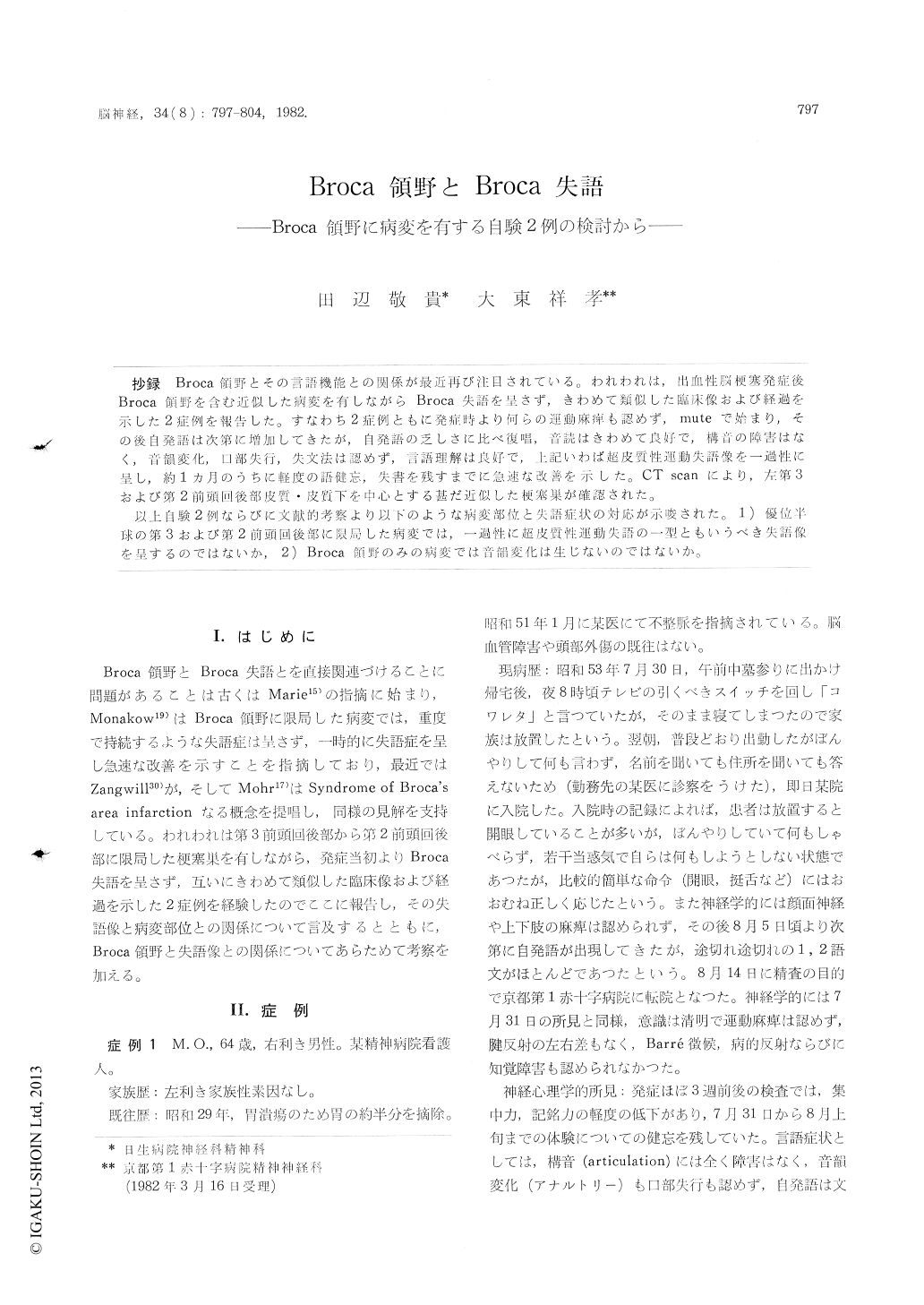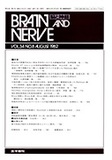Japanese
English
- 有料閲覧
- Abstract 文献概要
- 1ページ目 Look Inside
抄録 Broca領野とその言語機能との関係が最近再び注目されている。われわれは,出血性脳梗塞発症後Broca領野を含む近似した病変を有しながらBroca失語を呈さず,きわめて類似した臨床像および経過を示した2症例を報告した。すなわち2症例ともに発症時より何らの運動麻痺も認めず,muteで始まり,その後自発語は次第に増加してきたが,自発語の乏しさに比べ復唱,音読はきわめて良好で,構音の障害はなく,音韻変化,口部失行,失文法は認めず,言語理解は良好で,上記いわば超皮質性運動失語像を一過性に呈し,約1カ月のうちに軽度の語健忘,失書を残すまでに急速な改善を示した。CT scanにより,左第3および第2前頭回後部皮質・皮質下を中心とする甚だ近似した梗塞巣が確認された。
以上自験2例ならびに文献的考察より以下のような病変部位と失語症状の対応が示唆された。1)優位半球の第3および第2前頭回後部に限局した病変では,一過性に超皮質性運動失語の一型ともいうべき失語像を呈するのではないか,2) Broca領野のみの病変では音韻変化は生じないのではないか。
Recently, the relation between Broca's area and Broca's aphasia has been come into notice again.
We investigated two right-handed patients without Broca's aphasia in spite of the presence of lesions involving Broca's area after hemor-rhagic infarction. In addition, the clinical findings, the clinical courses and the sites of lesions of two cases were quite similar as follows. They showed no motor deficits and no other abnormal neurological findings from the beginning of the strokes. From the near muteness in the initial stage, speech began to improve gradually. And then, they demonstrated so called transcortical motor aphasia. Namely, repetition and reading aloud were excellent and articulations were normal without phonetic disintegration and dy-sprosody in contrast to the sparse and limited spontaneous speech. Comprehension was well preserved. Anomia was present and the ability to generate word lists was so poor that, for instance, only two animal names were listed in one minute. Mild to moderate agraphia was present. Agrammatism and buccofacial apraxia were not associated. Afterwards, the two patients showed rapid amelioration. About one month later after the stroke, only a slight difficulty in word finding and mild agraphia remained. In both cases, the lesions confined predominantly to the cortical and subcortical areas in the left posterior part of both the third and the second frontal gyri were confirmed by computerized to-mography.
According to the evidence from our two cases and to the literature, it may be concluded that the lesion restricted to the posterior part of the third and second frontal gyri in the dominant hemisphere produces a subtype of transcortical motor aphasia and that the lesion restricted to the posterior part of the third frontal gyrus (Broca's area) does not lead to phonetic disinteg-ration.

Copyright © 1982, Igaku-Shoin Ltd. All rights reserved.


